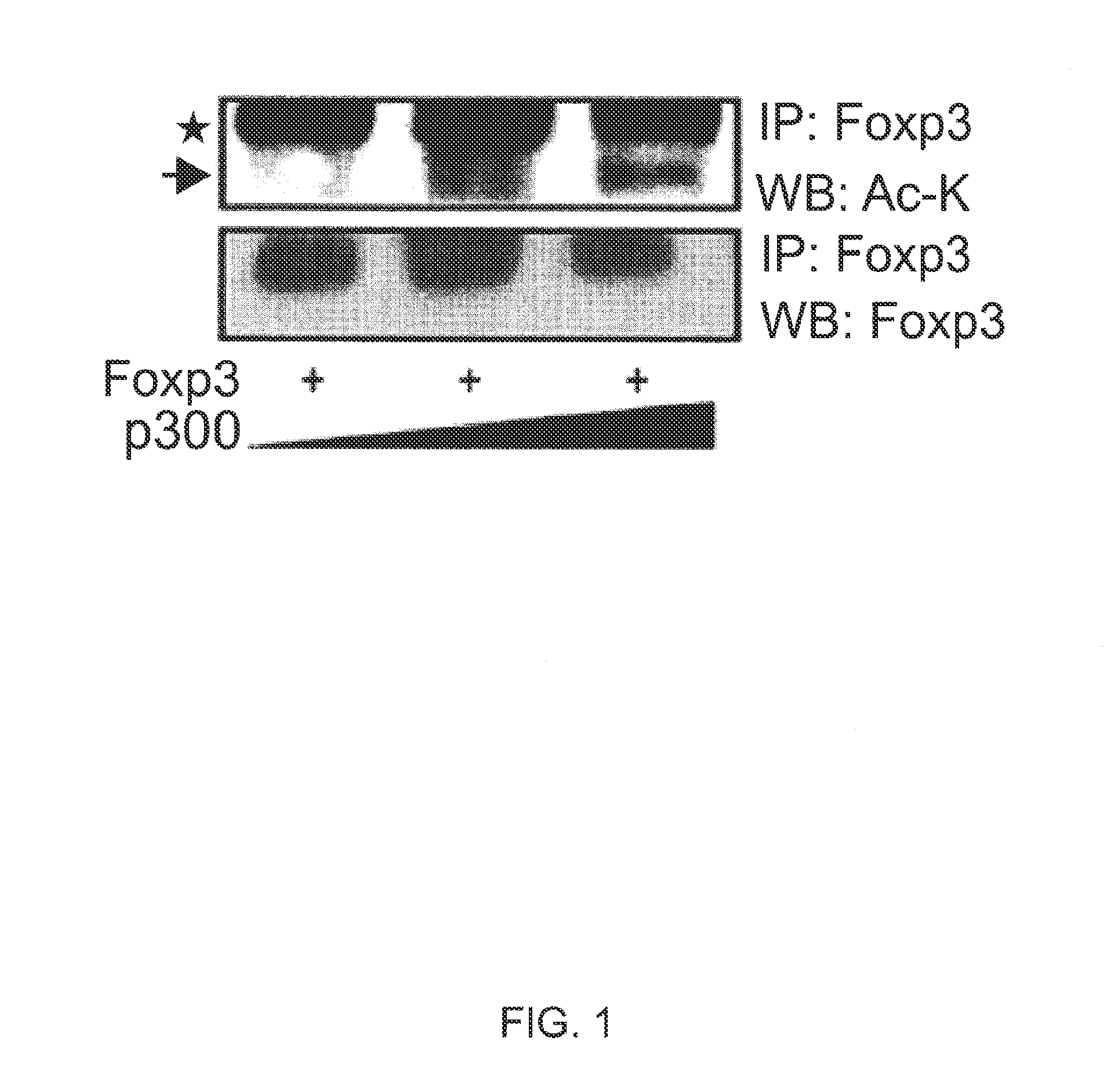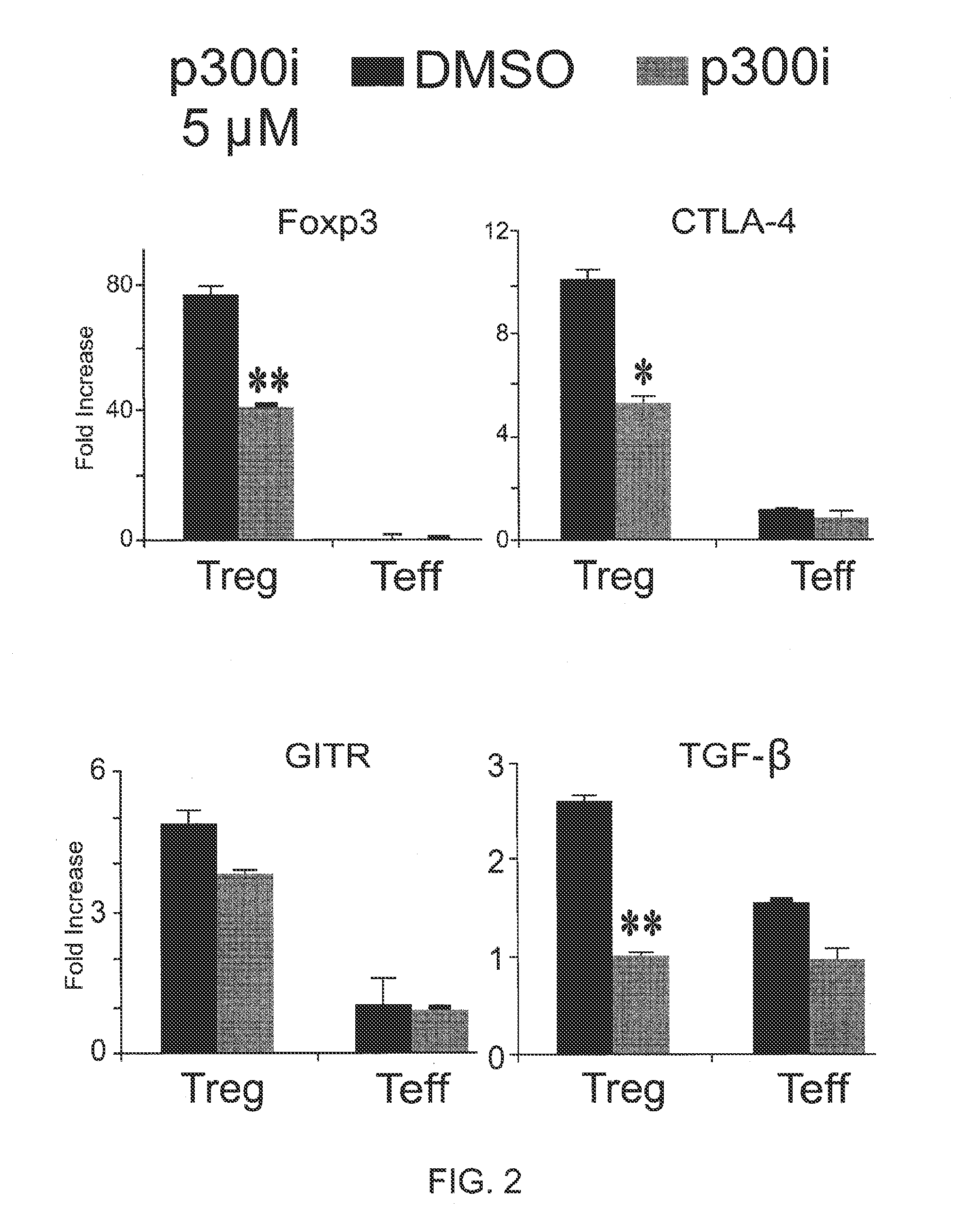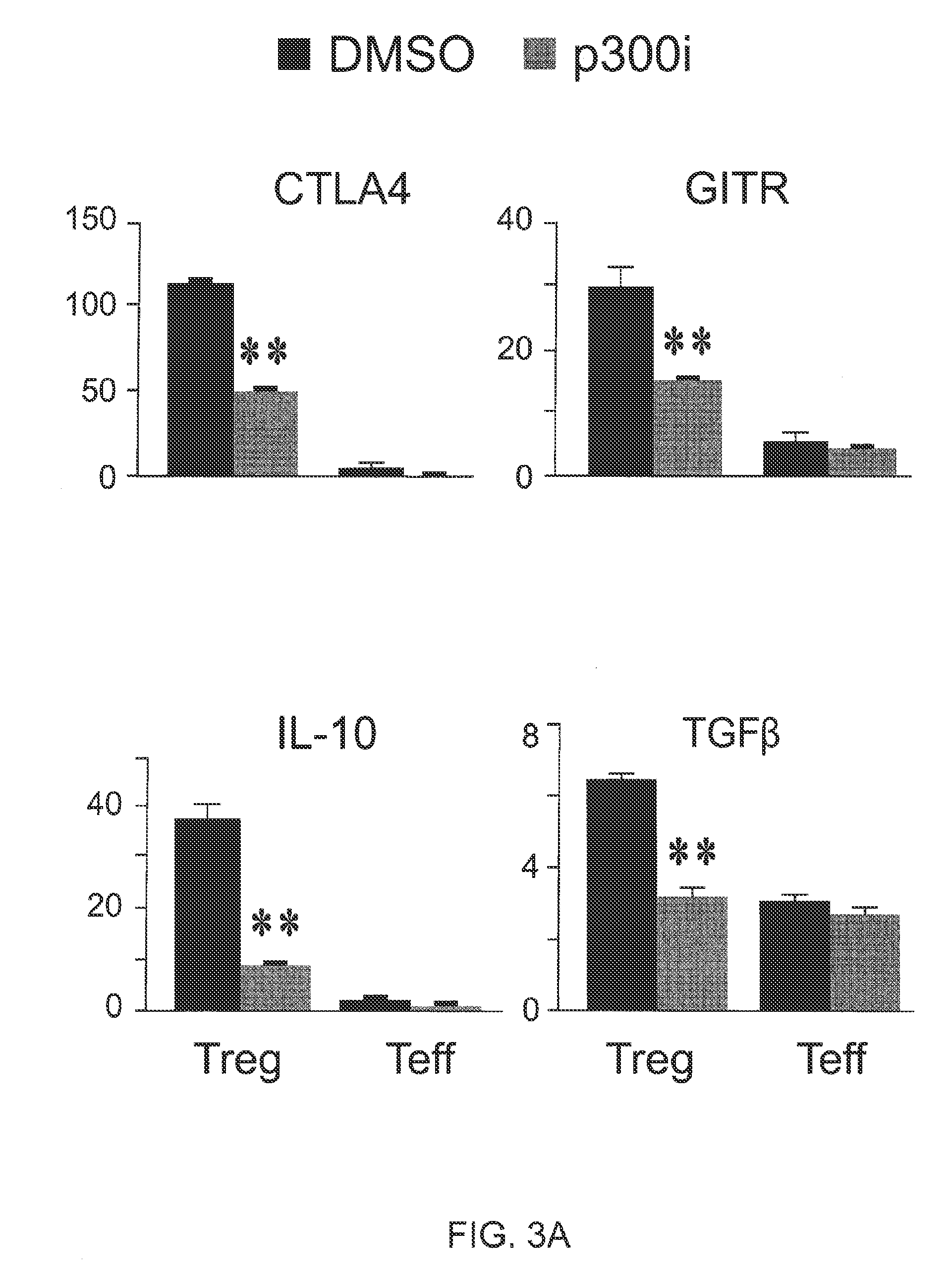Compositions and methods for treating foxp3+ treg related diseases
- Summary
- Abstract
- Description
- Claims
- Application Information
AI Technical Summary
Benefits of technology
Problems solved by technology
Method used
Image
Examples
example 1
p300 / CBP are Key HATs in Tregs
[0088]p300 is expressed by Tregs, and co-localized with Foxp3+ in the nuclei of murine Foxp3+ Treg. Comparable co-localization of p300 and Foxp3 was observed in transfected 293T cells.
[0089]Foxp3 gene expression by Tregs from wild-type (WT) mice, p300− / − (floxed p300) mice and CBP− / − (floxed CBP) mice was compared. The floxed p300 and floxed CBP mice were obtained as described in Kasper et al., Mol. Cell Biol. (2006) 26:789-809, the contents of which are incorporated in their entireties. Microarray data shows that p300 or CBP deletion led to down-regulation of Foxp3 gene expression.
example 2
p300 Binds to Foxp3 and Promotes Foxp3 Acetylation
[0090]Biochemical studies using 293T cells co-transfected with Foxp3 and HA-tagged p300 were carried out to assess the interaction between Fox3 and p300. Immunoprecipitation of p300 resulted in co-precipitation of Foxp3, and immunoprecipitation of Foxp3 likewise led co-precipitated p300. This interaction was of functional importance, since cotransfection of 293T cells with Foxp3 and p300 led to acetylation of Foxp3, as observed by immunoprecipitation of Foxp3 (IP: Foxp3) and Western blotting for acetylated lysine (WB: Ac-K) (FIG. 1), and increasing levels of p300 led to increasing acetylation of Foxp3 (FIG. 1). C646 was found to impair Foxp3 acetylation. These studies show that p300 can physically interact with, and acetylate, Foxp3.
example 3
Treg Suppression Impaired by C646 In Vitro
[0091]The effects of C646 on Treg suppression of effector T cell proliferation were evaluated in standard in vitro murine Treg suppression assays, performed as described in Tao et al., Nat. Med. (2007) 13:1299-307, the contents of which are incorporated by their entireties. In these assays, effector T cells (Teffs) were labeled with carboxyfluorescein diacetate succinimidyl ester (CFSE), and stimulated by CD3 mAb plus irradiated antigen presenting cells (APCs). Tregs and Teffs were mixed at a ratio of 0:1, 1:8, 1:4, 1:2 or 1:1, and cultured in the presence of DMSO (control) or 5 μM C646 (HATi). The percentage of proliferating CFSE-labeled Teffs in each mixture was assessed by flow cytometry after 72 hours as shown in Table 1.
TABLE 1Effect of C646 on effector T cell proliferationTreg:Teff0:11:81:41:21:1DMSO (% proliferating cells)89%48%35%24%18%C646 (% proliferating cells)88%85%78%70%66%
[0092]In the absence of Tregs (i.e., Treg:Teff ratio of ...
PUM
| Property | Measurement | Unit |
|---|---|---|
| Fraction | aaaaa | aaaaa |
| Fraction | aaaaa | aaaaa |
| Fraction | aaaaa | aaaaa |
Abstract
Description
Claims
Application Information
 Login to View More
Login to View More - R&D
- Intellectual Property
- Life Sciences
- Materials
- Tech Scout
- Unparalleled Data Quality
- Higher Quality Content
- 60% Fewer Hallucinations
Browse by: Latest US Patents, China's latest patents, Technical Efficacy Thesaurus, Application Domain, Technology Topic, Popular Technical Reports.
© 2025 PatSnap. All rights reserved.Legal|Privacy policy|Modern Slavery Act Transparency Statement|Sitemap|About US| Contact US: help@patsnap.com



